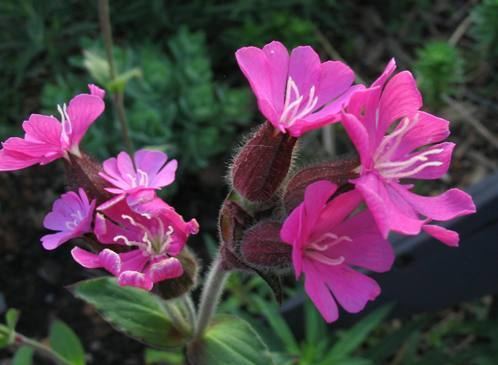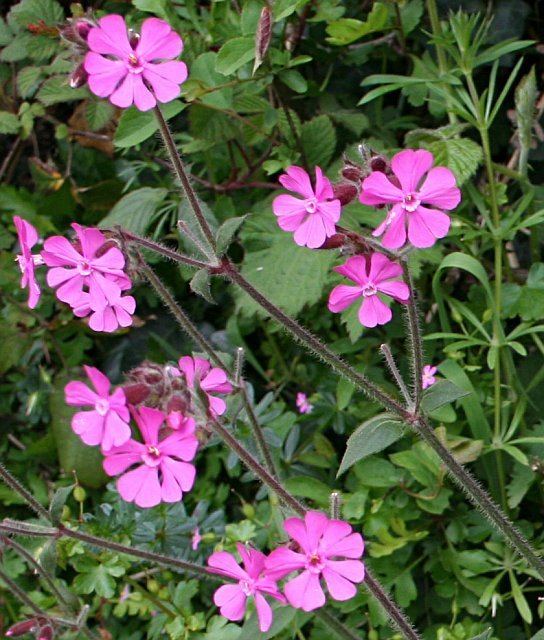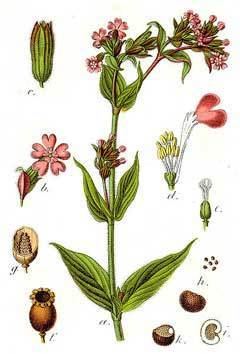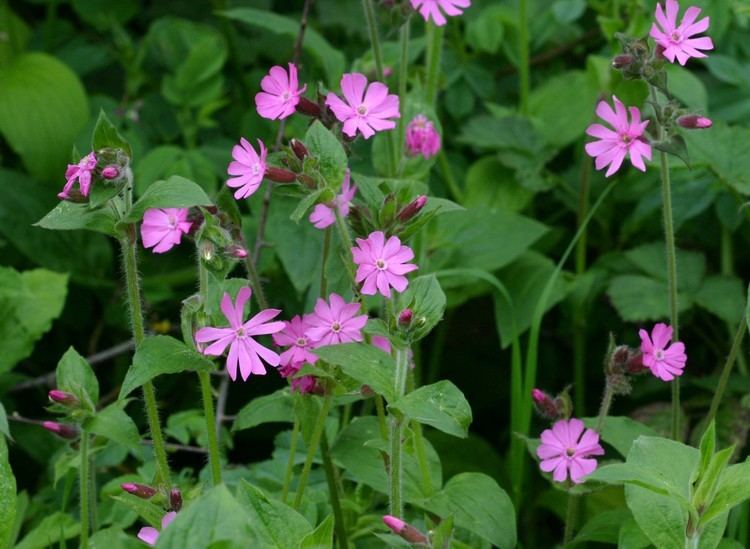Rank Species | Genus Silene Higher classification Silene | |
 | ||
Similar Silene, Silene latifolia, Lychnis flos‑cuculi, Silene vulgaris, Caryophyllaceae | ||
Red campion silene dioica in a flower pot gently swaying in the breeze
Silene dioica (syn. Melandrium rubrum), known as red campion and red catchfly, is a herbaceous flowering plant in the family Caryophyllaceae, native throughout central, western and northern Europe, and locally in southern Europe.
Contents
- Red campion silene dioica in a flower pot gently swaying in the breeze
- Silene dioica red campion
- Description
- Distribution
- Uses
- References

Silene dioica red campion
Description

It is a biennial or perennial plant, with dark pink to red flowers, each 1.8-2.5 cm across.There are five petals which are deeply notched at the end, narrowed at the base and all go into an urn-shaped calyx. As indicated by the specific name, male and female flowers are borne on separate plants, the male with 10 stamens and a 10-veined calyx, the female with 5 styles and a 20-veined calyx. The fruit, produced from July onwards, is an ovoid capsule containing numerous seeds, opening at the apex by 10 teeth which curve back. The flowers are unscented. The flowering period is from May to October and the flowers are frequently visited by flies, like Rhingia campestris. The plant grows to 30-90 cm, with branching stems. The deep green leaves are in opposite and decussate pairs, simple acute ovate, 3-8 cm long with an untoothed margin; both the leaves and stems of the plant are hairy and slightly sticky. The upper leaves are stalkless.
Distribution

Silene dioica is native to northern and central Europe[1] and is locally abundant throughout the British Isles. It is generally common in Northern Ireland, but rare elsewhere in Ireland. The plant is common on the Isle of Man where it is known as "blaa ny ferrishyn" or "fairy flower", and has a local taboo against picking it.
Red campion grows in roadsides, woodlands, and rocky slopes. It prefers to grow on damp, non-acid soils.

Plants of Silene latifolia × Silene dioica = Silene × hampeana that are fertile hybrids with the closely related white campion (Silene latifolia) are common in some areas. They may have paler pink flowers and be intermediate between the two species in other characters.
Uses
This plant is used as an ornamental perennial flower for the perennial border. One particularly notable variety is a hot pink, double flowered variety with deep green leaves called 'Firefly'.
Besides the aesthetic value of its flowers, the crushed seeds of red campion have also been used to treat snakebites . The nectar of the flowers is utilised by bumblebees and butterflies, and several species of moth feed on the foliage.
